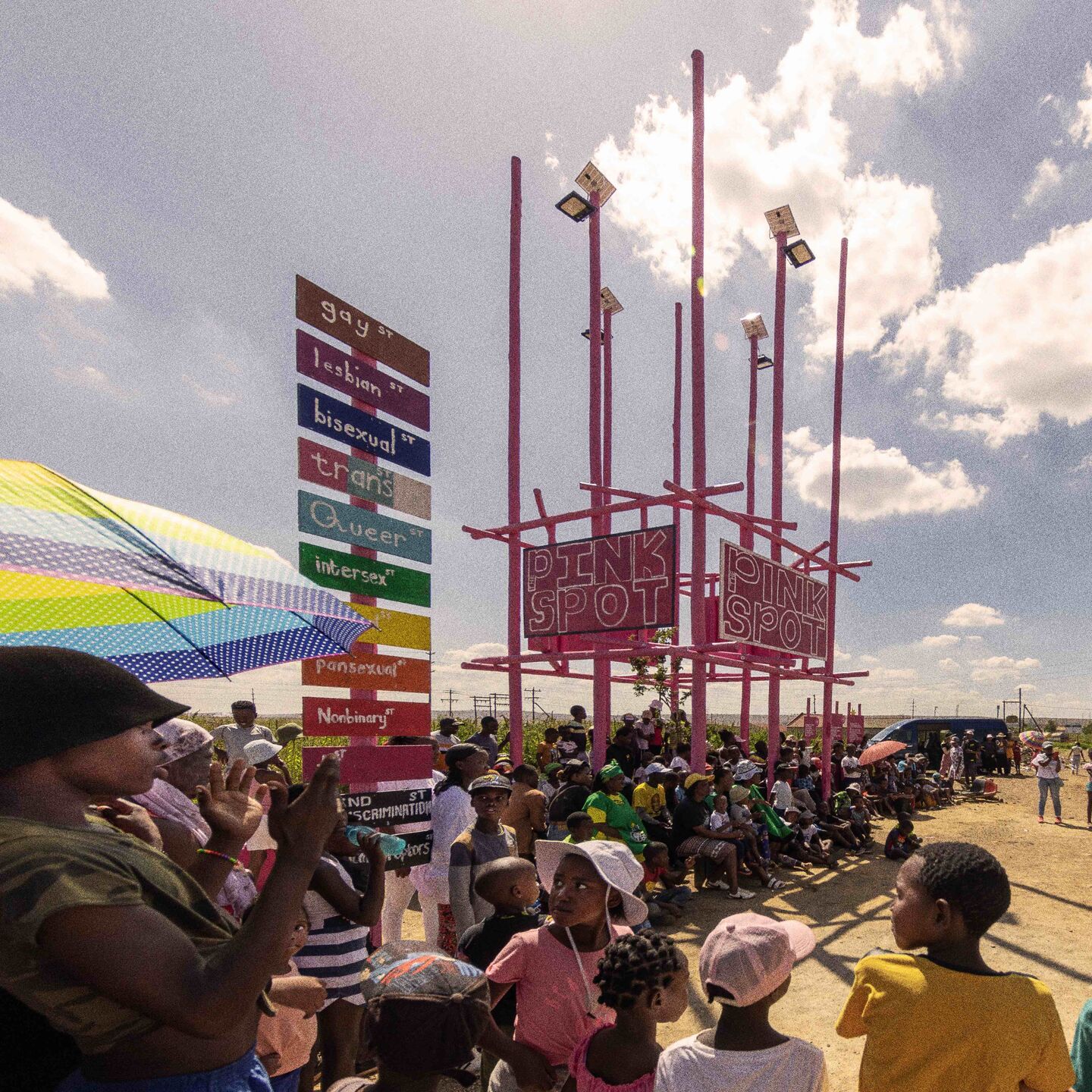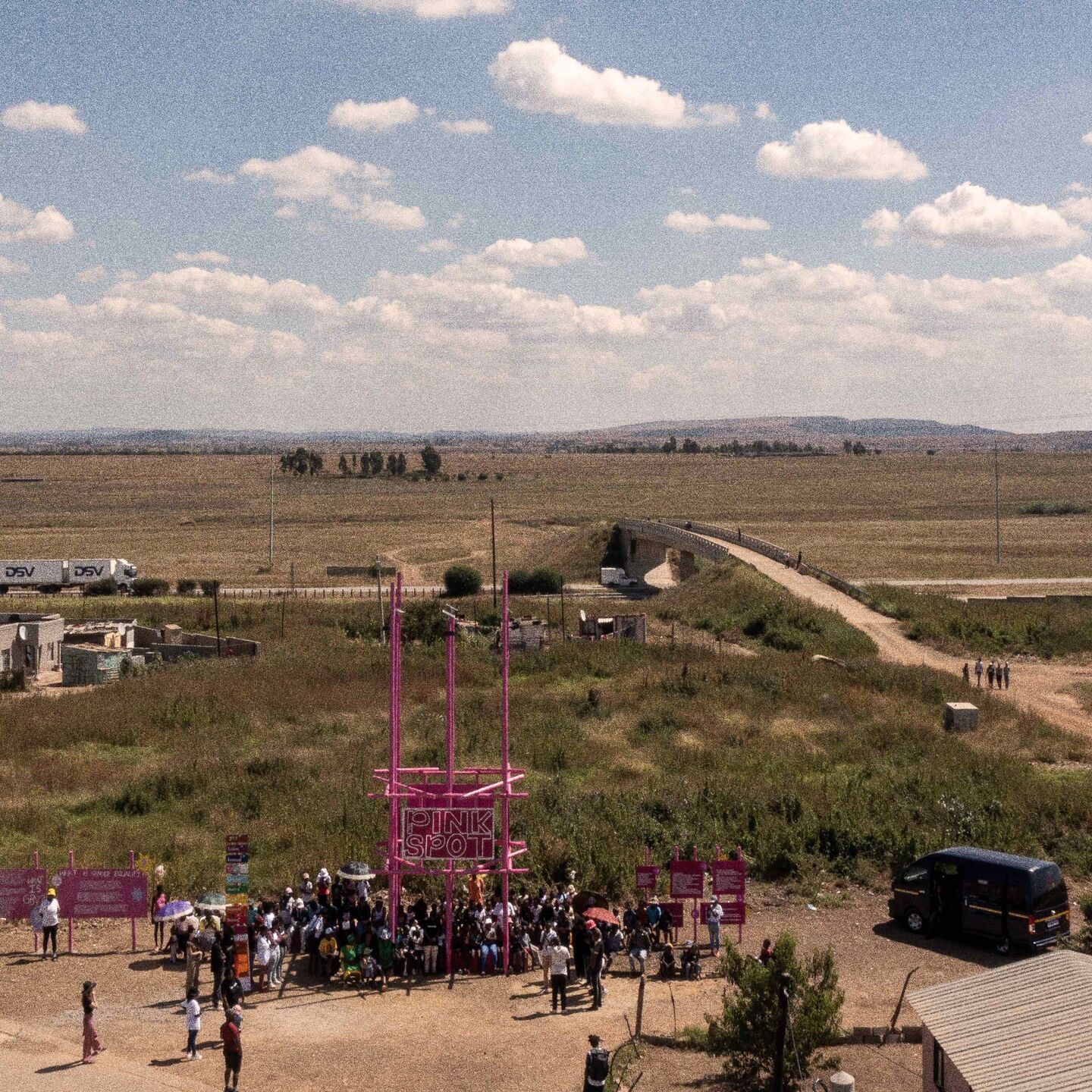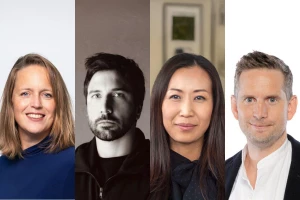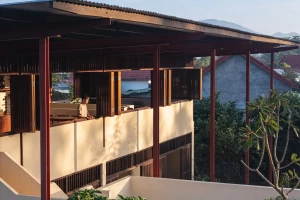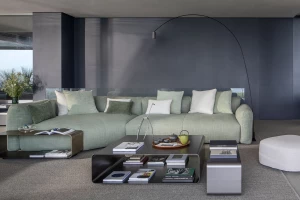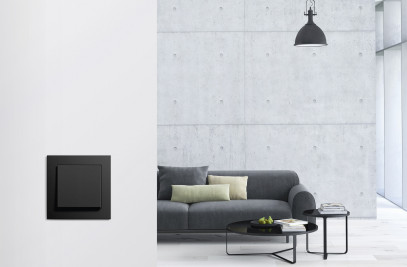Frankie Pappas is a collaborative architecture and design studio. The name is a collective pseudonym that describes a group of people with similar ideals and a variety of talents: working together, they strive to “find remarkable solutions to fascinating problems.” Frankie Pappas features in Archello’s 25 best architecture firms in South Africa. A recent South Africa-based project by the studio is highlighted below.
House of the Pink Spot
House of the Pink Spot is a community landmark that reclaims a space in which people can gather and converse, find safety and enjoy recreation. Located in the Drieziek 5 area of Orange Farm, a township around 45 kilometers (28 miles) from the city of Johannesburg in South Africa, the “pink spot” seeks to transform a recognized gender-based violence (GBV) hotspot into an active community hub. The small structure was designed by Frankie Pappas in collaboration with the Drieziek community.
The identified GBV hotspot was on a barren plot of land used as a dumping ground. It had no working street lights and little human activity, thereby increasing the potential for crime and violence. The project’s brief was to reclaim the space, to spotlight the high levels of violence against women, and to create a safe haven.
The project’s clients are young activists from Orange Farm. Amnesty International South Africa provided fifteen young activists — known as “Digital Disruptors” — with the knowledge and tools needed to develop youth-led campaigns. These Digital Disruptors called on the local government of Orange Farm to enact GBV policies that promote positive change. They also worked with Frankie Pappas to design and develop the House of the Pink Spot: “The majority of the disruptors have experienced and/or witnessed the pain that comes with abuse,” says the studio. “The activists requested community consultations to ensure the structure had the buy-in of residents.”
The project’s materials were obtained in Orange Farm, including: bagged brick for the seating (creating a textured, rustic effect), telephone poles for the structure, and shutter ply for the signage boards. The materials were then decorated in bright pink paint; all signage was designed and hand-painted by members of the community. The colorful signs provide education on human rights, the root causes of GBV, and gender equality. The entire structure was built in two weeks with the help of community volunteers.
A tree planted in the center of the small structure continues the South African tradition of resolving disputes and finding solutions beneath a tree. The pink spot’s raison d’être is community engagement: It offers people “a landmark, a meeting spot, a study space, a play park, an informal theatre, and a dance hall,” says Frankie Pappas.
In Drieziek 5, the solution to public safety and addressing GBV is less about architecture and more about people and community. Frankie Pappas believes it is “the architect’s role to help catalyze the community into occupying and cherishing the space.” To ensure the project works, it is ultimately about community engagement.
The House of the Pink Spot has a number of architectural incentives that help with engagement, such as the structure’s height, bright color, natural light, wifi, seating, and shade. The hot pink aesthetic provides a vibrant place of optimism and hope that outweighs the area’s history of crime and violence.
Frankie Pappas’s closing thought on the project highlights a quote by the American novelist and poet Maya Angelou: “Each time a woman stands up for herself, without knowing it possibly, without claiming it, she stands up for all women.”



